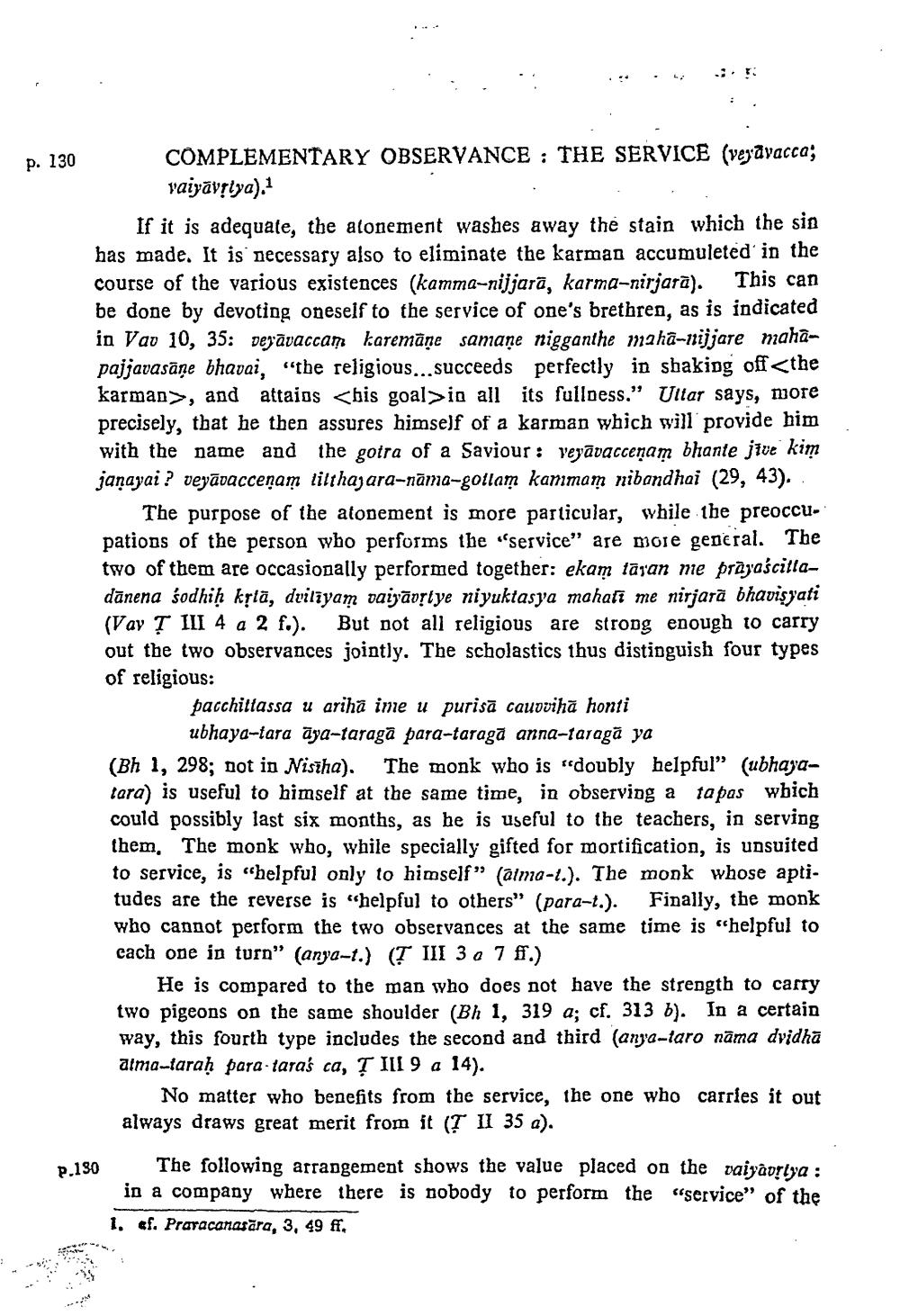________________
p. 130
COMPLEMENTARY OBSERVANCE : THE SERVICE (vezavacca;
vaiyavriya). If it is adequate, the alonement washes away the stain which the sin has made. It is necessary also to eliminate the karman accumuleted in the course of the various existences (kamma-nijiarā, karma-nirjarā). This can be done by devoting oneself to the service of one's brethren, as is indicated in Vav 10, 35: Dejāvaccam karemane samane nigganthe maha-nijjare maha. pajjavasāne bhavai, "the religious...succeeds perfectly in shaking off <the karman>, and attaios <his goal>in all its fullness." Uttar says, more precisely, that he then assures himself of a karman which will provide him with the name and the goira of a Saviour : veyāvaccenam bhante jive kim janayai ? veyāvaccenam tilthaj ara-nāma-gollam kammam nibandhai (29, 43).
The purpose of the atonement is more particular, while the preoccupations of the person who performs the service" are more general. The two of them are occasionally performed together: ekam tājan me prājaścilladānena sodhiḥ kṣlā, dvilīyam vaijāvsiye niyuktasya mahali me nirjarā bhavisyati (Vay T III 4 a 2 f.). But not all religious are strong enough to carry out the two observances jointly. The scholastics thus distinguish four types of religious:
pacchittassa u ariha ime u purisā caudvihā honti
ubhaya-tara āya-taragā para-taraga anna-taraga ya (Bh 1, 298; not in Nisīha). The monk who is "doubly helpful” (ubhayatara) is useful to himself at the same time, in observing a tapas wbich could possibly last six months, as he is useful to the teachers, in serving them. The monk who, while specially gifted for mortification, is unsuited to service, is helpful only to himself” (alma-t.). The monk whose aptitudes are the reverse is "helpful to others" (para-t.). Finally, the monk who cannot perform the two observances at the same time is "helpful to cach one in turn" (anya-t.) (T III 3 0 7 ff.)
He is compared to the man who does not have the strength to carry two pigeons on the same shoulder (Bh 1, 319 a; cf. 313 b). In a certain way, this fourth type includes the second and third (anya-taro näma dvidha alma-taraḥ para taraś ca, Ţ III 9 a 14).
No matter who benefits from the service, the one who carries it out always draws great merit from it ( II 35 a).
P.130
The following arrangement shows the value placed on the vaiyadrlya : in a company where there is nobody to perform the service" of the
1. f. Praracanasära, 3, 49 ff.




